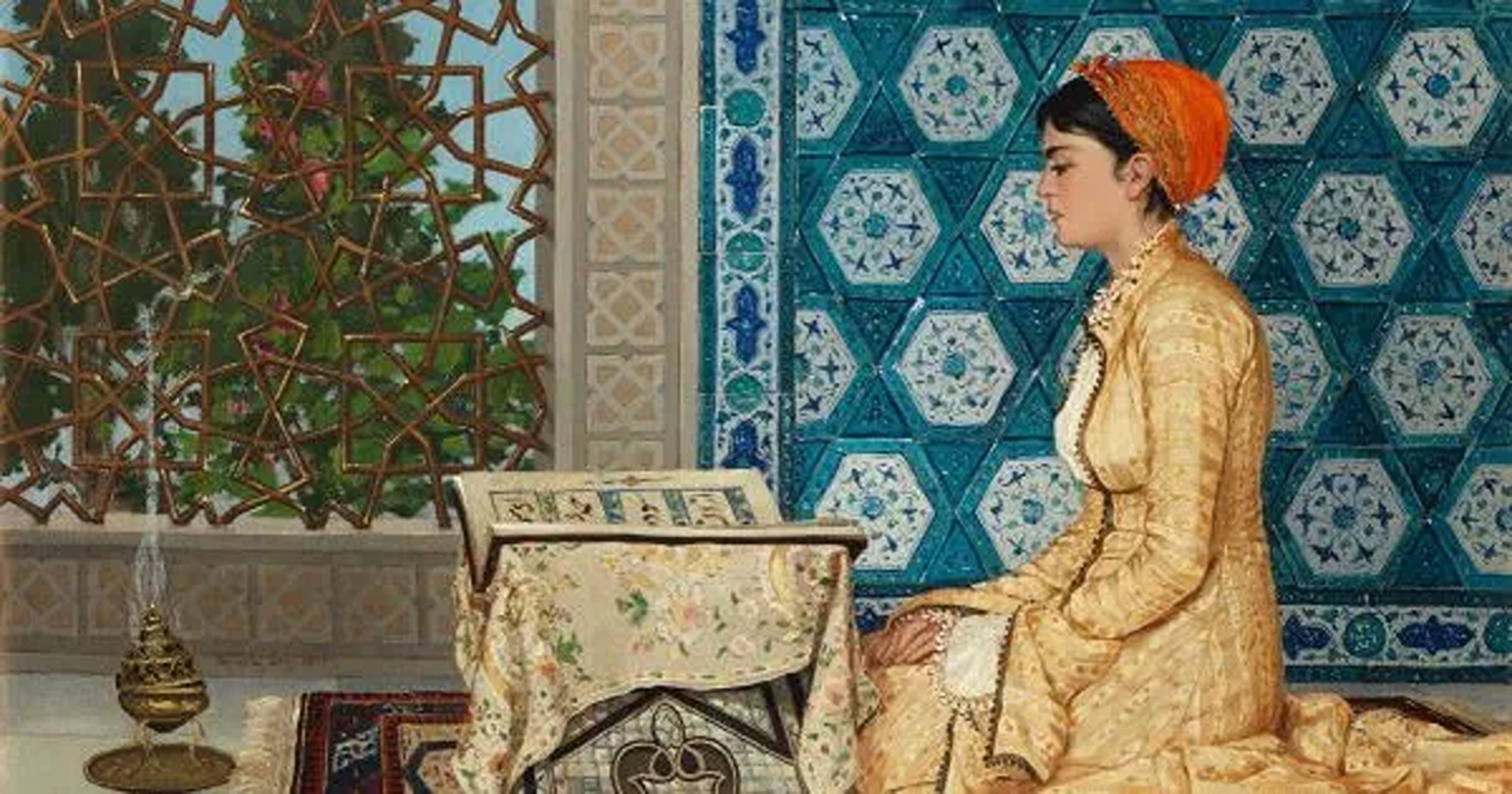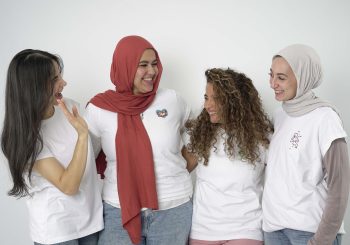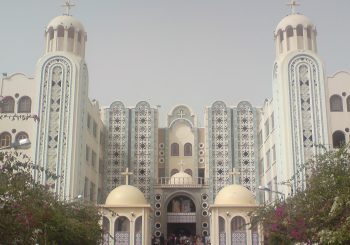When a young woman named Al-Dahnā, living in the Arabian Peninsula during the Umayyad Islamic period, was asked why she was unhappy with her marriage, she did not hesitate or shy away from giving an honest answer: her husband was inexperienced in bed.
Standing before the governor of al-Yamāma, a district east of Najd on the Arabian Peninsula, Al-Dahnā had to justify her request for divorce, not from just any man, but from a well-regarded poet who worked with high-ranking Umayyad officials. In his defense, her husband, al-Ajjāj, accused her of being difficult, claiming that if he wanted to sleep with her, he had to fight for it. In retaliation, Al-Dahnā wielded the power of poetry, and the vigor of the Arabic language, to voice her reasons for seeking a divorce.
At a time in Islamic history when poetry held immense significance, she expressed her grievances poetically, stating, “I swear that he does not take me in his arms, nor does he kiss me or sniff me. No passionate motion comforting me, making my toe rings fly into my sleeve.”
As a woman, she spoke with her full feminine voice, tapping into her innermost desires, and it was only through poetry that these desires found their truest expression. Poetry gave her the voice to speak, to dissent, and to express her desire—not just for kisses, but for the kind of sexual intimacy that would make her “toe rings fly into her sleeve,” as she vividly described. Through her words, charged with the depth of her feminine desires, she advocated for the importance of a woman’s pleasure, even above that of a man.
When her husband responded with a poem, insisting that he was still “not tired of being close to her,” she refused to yield to his demands. Once again, she turned to poetic metaphors and imagery to express, with deep passion, why she sought a divorce. In her poem, she declared: “By God, if not for my nobility and virtue, and the fear of the governor’s punishment, I would have run from the old man of the camel’s clan like a young she-camel—noncompliant, unruly, striking the sides of the strapped saddle.”
Likening herself to a young camel ridden too early, she confessed that if she could, she would shake him off, a metaphor for her lack of desire to be physically intimate with him. This poem suggests that, due to his lack of experience, he was like someone attempting to ride a camel too soon or without proper knowledge, symbolizing how he was engaging in sexual intercourse with her prematurely. Like many Arab poets who drew inspiration from their surroundings, female poets like Al-Dahnā also used the image of a young camel to convey her sexual incompatibility with her husband.
With a single poem, Al-Dahnā was able to end her marriage and secure a divorce. Yet, she was not the only woman of her time to use poetry to express her sexual desires; many other female and male poets alike used poetry as a mirror to their hearts, revealing emotions that had long remained silent, only to be voiced through verse.
Female Sexuality and Poetry in the Early Islamic Period
While many books on Arab women focus on the repression of desire, there are several historical works and anthologies that explore how sexuality in the early Islamic periods was openly expressed, particularly through poetry.
Erotic studies during this time were also not considered of lesser value than fields like astronomy, science or engineering. For instance, in her book Female Sexuality in the Early Medieval Islamic World (2021), Pernilla Myrne, an associate professor of Arabic literature and history at the University of Gothenburg, documents how erotic publications from this era frequently highlighted women’s sexual needs and the importance of female romantic fulfillment.
Being able to openly express sensual desires was considered important for the growth of society, and this is reflected in the works of early Arab poets. Various poets wrote about being in love or mourning love, using all their senses to capture the full human experience. In ninth-century Arabia, a literary genre called erotology, focused on the study of sexual desire and lovemaking, was also developed. This genre included four sub-genres: medical, sexually stimulating, philosophical, and Islamic-themed works.
Many Arab-Muslim writers who focused on love and sex were also scholars and advisors, sharing their insights on sexual intimacy to educate others. In Islamic history, people also openly talked about sex, and Muslim scholars wrote detailed dictionaries of sex and Arabic erotica, covering every aspect of sexual activity and positions.
What set Arab erotology apart at the time was its focus on female sexual pleasure, an aspect historians say was missing in other civilizations. British professor Daniel Newman, an expert in erotology and sexuality in the medieval Muslim world, explores Arabic erotological literature in his book The Sultan’s Sex Potions (2014). In it, he notes that female sexual pleasure, particularly related to female ejaculation, was relatively absent from ancient Greek literature, and its recognition in Arabic texts was seen as groundbreaking.
Though much of the early Arabic erotic literature was lost, some of it has been preserved and documented by authors like al-Suyūṭī, an Egyptian writer and scholar from the 10th century, and through collections like Balāghāt al-nisāʾ (The Eloquence of Women, d. 280/893) by Ibn Abi Tahir Tayfur, a Persian linguist and poet who wrote in Arabic.
A Window into the Feminine Psyche
In Arabic erotic literature, women’s sexual and erotic poetry served as a window into their inner thoughts and feelings, expressing depths that men often could not and would not ever match.
For instance, in some poetry, female poets use nature as a metaphor for their sexual desires.
An Arab poet from the Arabian Peninsula in the al-Yamāma region, Umm al-Ward compares her genitalia to the hard, oval spathe of date palm flowers, which splits when the flowers ripen. The date palm, common in the al-Yamāma region of modern Saudi Arabia, provided a natural symbol for her to describe her vagina.
Female writers also saw their sexual desires and expression as a reflection of their intelligence and power, using it to assert themselves—whether to win an argument with their husband or to outsmart a man in a verbal confrontation, using erotic poetry to fulfill their desires.
Ibn Abi Tahir, an ancient Islamic scholar who recorded the works of various writers, recounts the poetry of an anonymous woman who approached the governor to seek a divorce from her husband. When asked for her reasons, she responded with a poetic verse, saying, “From the front, his smell is horrible, but from behind, it is pleasant. His penis is soft, his eyes are staring, and his legs are unsteady.” Her verses were so humiliating to her husband that he eventually divorced her, once again demonstrating the power of poetry and verbal expression in helping women achieve their desires.
But a woman’s body is far more than a vessel for sexual pleasure; it creates life and carries a power greater than the woman herself. This is why women turned to poetry to voice the sacred bond they have with their bodies, expressing the depth of motherhood and the life-giving force that defines their existence.
When Umm ʿAwf, an Arab poet from the region of Basra, which is in modern day Iraq, fought for custody of her child after her husband divorced her, she did not win custody through legal documents or formalities, but through the sheer power of her poetic speech. She is quoted saying, “He carried him when he was light, and I carried him when he was heavy. He gave birth to him in pleasure, and I gave birth to him in distress. My belly is his vessel, and my breasts are his waterskin, my lap his courtyard.”
The caliph was so moved by her words that he granted her child custody, showing once again how poetry held great influence for women in that era. Poetry was like a vital breath of oxygen, giving them the space to breathe and release their desires through it; whatever they inhaled, they exhaled through the life force of poetry.
Even after all these years, while poetry no longer holds the same influence it once did, women still use the power of words and verbal expression to bring clarity to what is often misunderstood or unknown about womanhood. From social media to online movements, the power of verbal expression remains alive, though it has taken on a new form.
What endures throughout history is poetry’s ability to eloquently capture the true experience of womanhood, as the essence of being a woman—and how to be a woman—has often been overshadowed or shaped by the prevailing male perspective and male writers.






Comment (1)
Hinduism should be hated. Our Holly Shrine is, that is in Makkah. Khana e Kaaba, was raided in earlier Prophets time with Idols. Reading or reciting the Holly Quran is quite pleasing for depression. Our is very difficult geographical areas, nor we are ever secured. Arab leagues are good to be rested on. Languages are good to be travelled to the places. Every man and woman should work and do jobs as equal rights. That gives the economy stable with society flourishments. Everyone should contribute in his/her domestic needs.